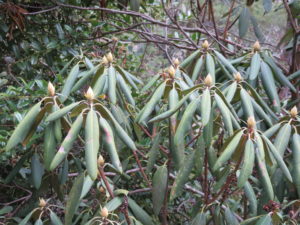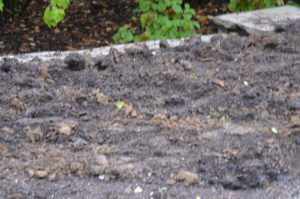To develop a successful landscape plan, first do a walk-a-round before you start digging and planting. Record your landscape’s sun patterns, soil types, wind and water movement. This information will help you select the kinds of plants that will prosper under existing conditions.
Sun exposure shifts daily and seasonally. Observe the garden at different times to gain a better understanding of light exposures. Particularly note areas that receive full day sun or full shade. What percentage of existing trees and shrubs are deciduous and evergreen. Under deciduous shade, the fall and winter landscape may bathe in sunlight. In areas with partial sun exposure, identify where sunlight strikes an area at what time(s) of day as well as seasonally.
Soils may vary from one area of a landscape to another. Dig test holes in a variety of locations to determine the texture and color of soils. Is the landscape composed of sandy or loamy soils? Does it contain lots of clay? Soil type and drainage go hand-in-hand and impact the types of plants that should prosper in your landscape. Sandy soils drain very quickly, while clay soils are slow to drain. Many plants are also limited by soil pH, so it is a good idea to have the soil analyzed.
Water and Soil Drainage. In addition to soil type, topography and physical structures influence soil moisture. Low spots and areas surrounding downspouts tend to be wet, while the area beneath an overhang is commonly dry. Walk the garden after a rain to see where water collects and make note of seasonal rainfall patterns in your area. Do your region frequently experience seasonal drought; is your summer climate hot and humid? Are your winters generally snow covered or will ice storms damage tree branches?
Wind. Exposure to wind may vary considerably across a landscape. Some areas are likely exposed to strong winds while others may be protected by buildings, structures, or tall shrubs. For example, broadleaf evergreens such as camellias, rhododendrons, daphnes, and pieris are sensitive to drying winter winds. Understanding wind patterns will aid in positioning new plants at planting time.
Wildlife. What birds and animals are indigenous to your neighborhood? Do critters cause damage to plants? Consider deer, rabbits, raccoons, squirrels, moles, voles (field mice) which may relish your landscape and garden plants.



 Posted in
Posted in 
